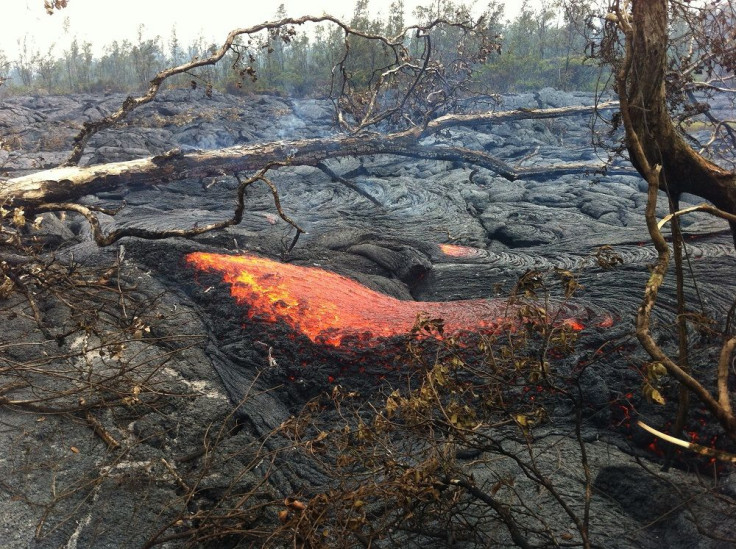Lava Overflow At Kilauea Volcano Triggers Rockfalls & Explosions

Kilauea Volcano’s lava overflowed on Wednesday and reached the wall of the Halema’uma’u crater. It triggered rockfalls and explosions when the cold rocks hit the hot lava.
While the lava flood is not a risk to resident or structures in Hawaii, it landed on instruments that monitor the lake surface and scorched an old fence, said Matt Patrick, geologist at the US Geological Survey’s Hawaiian Volcano Observatory, reports Discovery.com. It is the first time in three decades that lava is flowing on the floor of the crater.
Patrick said that a rockfall on Tuesday morning tossed molten rock 280 feet high on the edge of the crater. The overflow (watch video here) and explosion were expected since the observatory reported over the weekend that the lava was just 13 feet below the crater on Saturday but slightly went down to 20 feet on Sunday.
Kilauea’s last major eruption was in 1982. But it has erupted continuously since 1983 from its slopes into the area known as the East Rift Zone.
Since the lava surface is 100 to 200 feet below the rim of the crater lake, it cannot be seen from the public viewing around the volcano. But its “incandescent cracks and often vigorous spattering” are seen from the overlook, Patrick said.
However, visitors to Volcanoes National Park would be getting a spectacular display, reports Huffington Post. Patrick adds that Kilauea will abruptly deflate and the lava would go down to its usual level, Huffington Post reports.
To contact the writer, email: v.hernandez@ibtimes.com.au





















